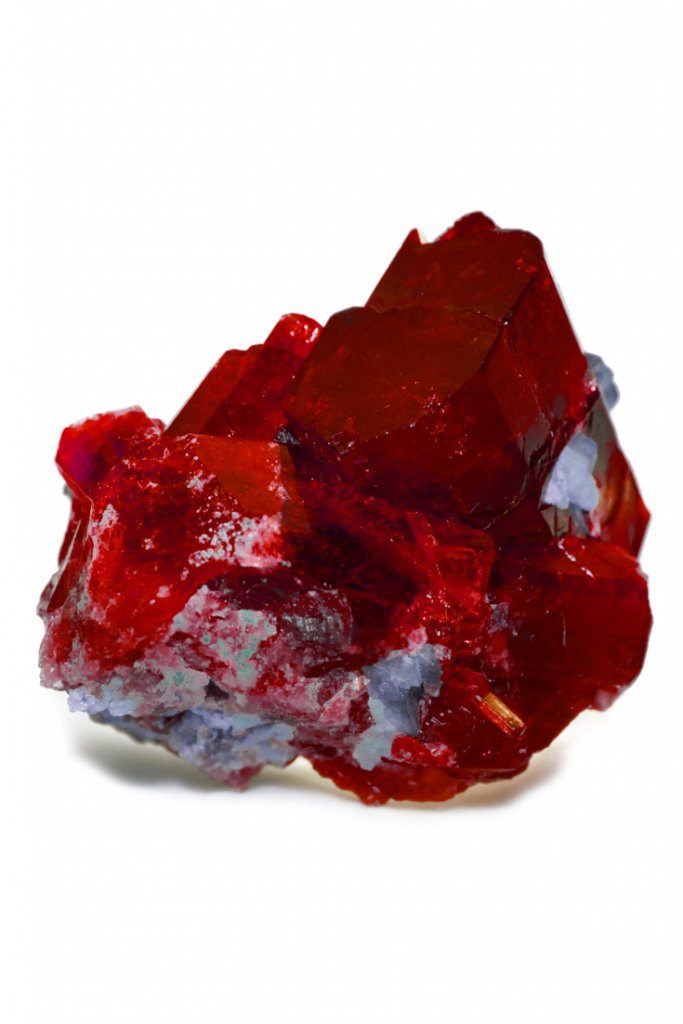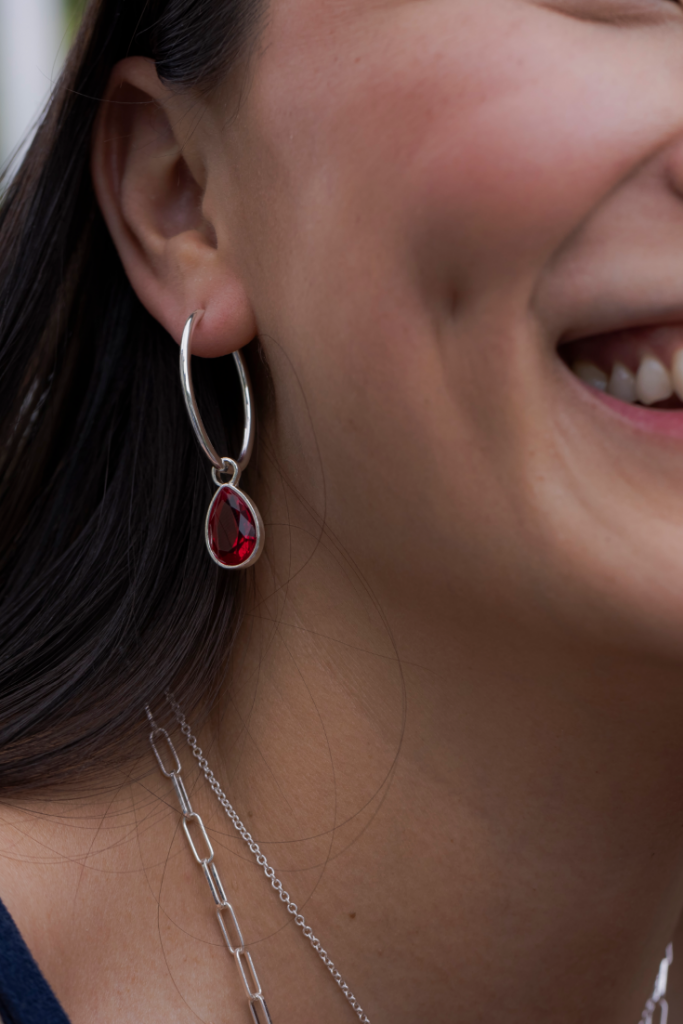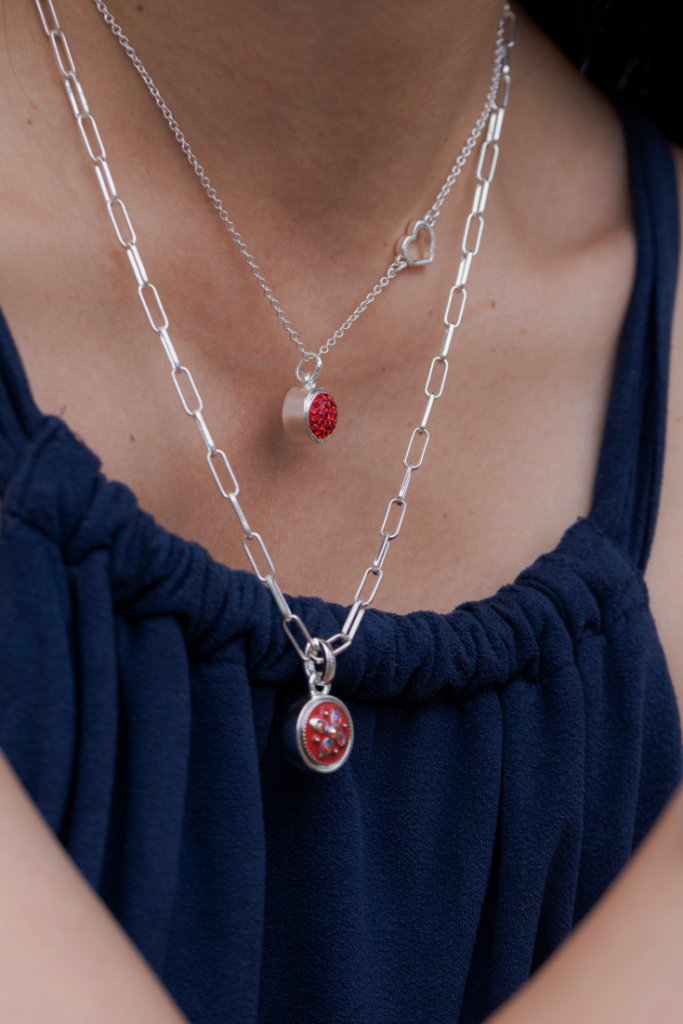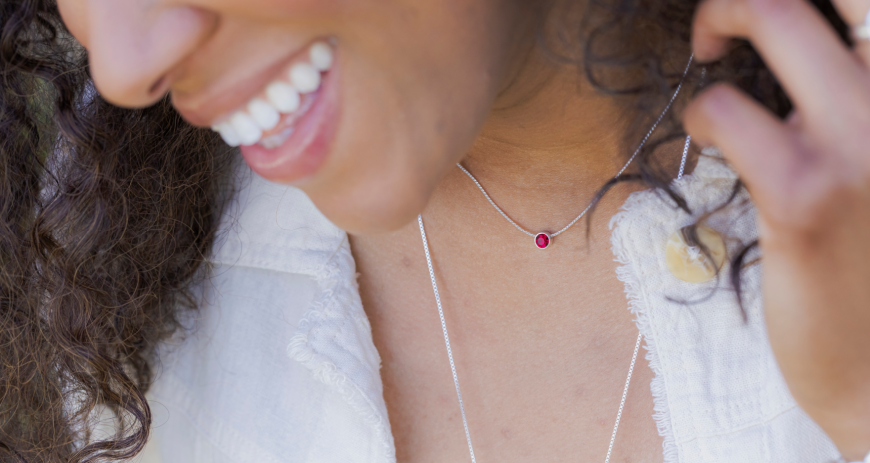
The ruby gemstone
What Is the July Birthstone?
The July birthstone is the ruby. The ruby is part of a group of gemstones called the Big 3, which consists of the ruby, the emerald, and the sapphire. The ruby is also traditionally used to commemorate the 15th and 40th wedding anniversaries (“Ruby”).

Ruby Teardrop Accent on Classic Oval Hoops
What Are the Characteristics of the July Birthstone?
The ruby is one variety of the corundum mineral species, which also includes the sapphire. Some say it is one of the most important gems in the colored stone market (“Ruby Description”). The mineral corundum, in its purest form, is actually colorless; corundum gets its color variations from trace elements becoming part of the mineral’s crystal structure.
Chromium is the trace element that causes a ruby to become red; a ruby can range from an orangey red to a deep purplish red. The more chromium that is present, the stronger the red color (“Ruby Description”).
What Is the History of the July Birthstone?
The word ruby comes from the Latin word ruber, which means “red.”
Early cultures believed that rubies held the power of life because of their red color. They thought the red was like the red blood that flows through our veins. In addition, gemologists consider the ruby to be one of the most historically significant gemstones because it’s mentioned in the Bible four times. The Bible associates the ruby with qualities like beauty and wisdom. In Sanskrit, a ruby is called ratnaraj or “king of precious stones” (“Ruby History and Lore”).

Ruby Couture Dotlet on Classic Dotlet Heart Chain
Ancient Hindus believed that offering rubies to the god Krishna guaranteed you rebirth as an emperor. The people of India believed that owning rubies allowed you to live in peace with your enemies. In Burma (now Myanmar), warriors used rubies to make them invincible in battle; they inserted them into their flesh and made them part of their bodies.
European royalty and the upper class sought after the ruby more than any other gemstone. Many medieval Europeans wore rubies to ensure health, wealth, wisdom, and love (“Ruby History and Lore”)
Where Can You Find the July Birthstone?
Myanmar is one of the oldest recorded sources of rubies. For more than five centuries, Myanmar has produced some of the most valuable rubies. These rubies are vibrant red with “light-scattering inclusions” (“Ruby Birthstone”).
Vietnam has been another source of rubies since the late 20th century; this area produces rubies in a red to a purplish red color. The African nation of Mozambique is another important source of rubies; gemologists that find rubies there compare them to Myanmar rubies. Afghanistan, Tajikistan, Pakistan, Sri Lanka, Kenya, Tanzania, and Madagascar are additional ruby sources (“Ruby Birthstone”).
To create custom July birthstone jewelry, visit StyleDots.com.
Learn more about birthstones in our Birthstone Guide.

